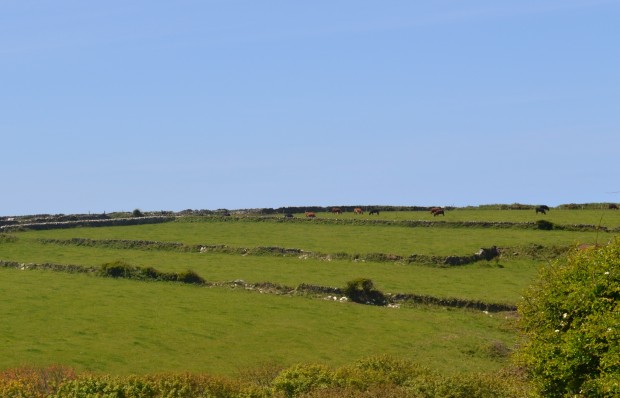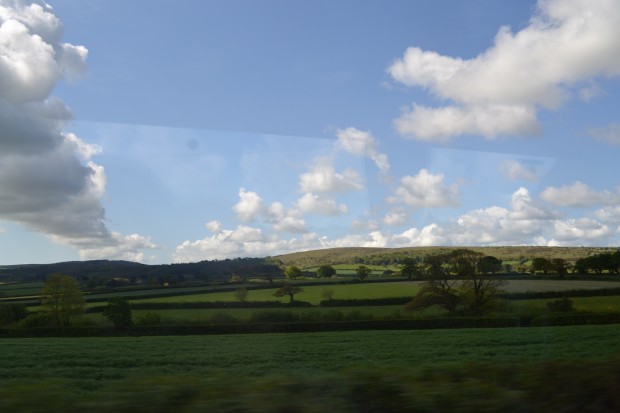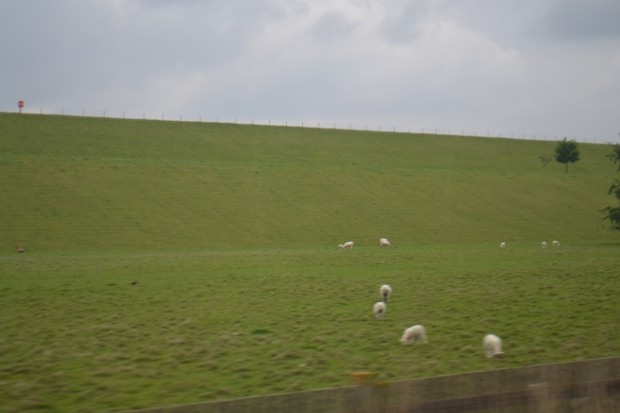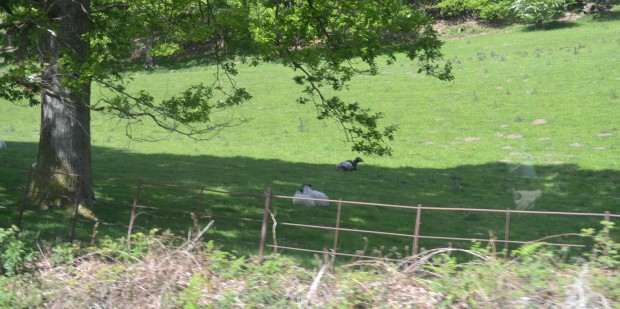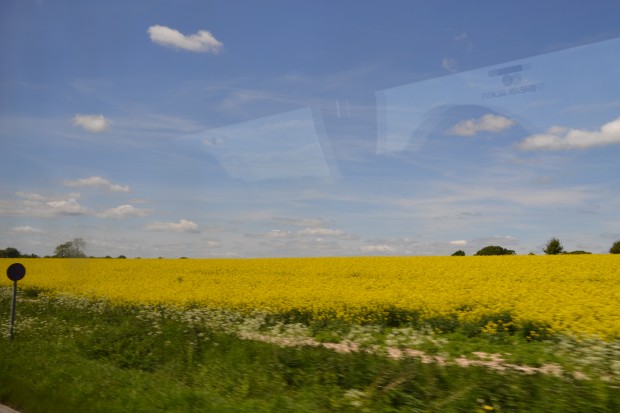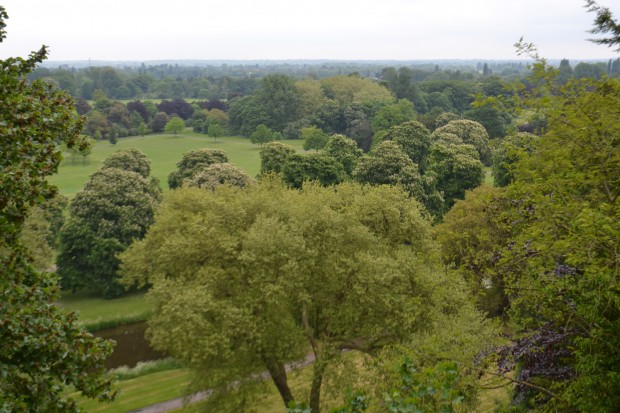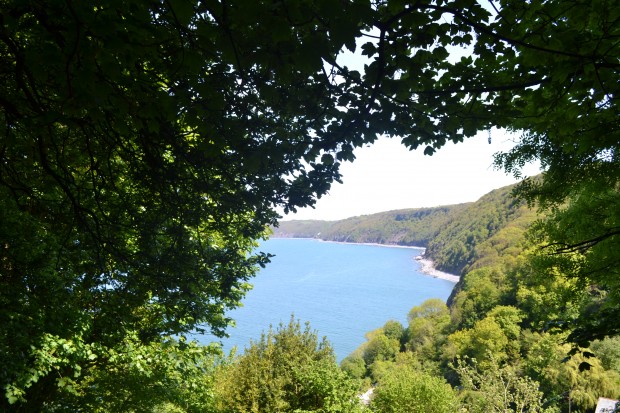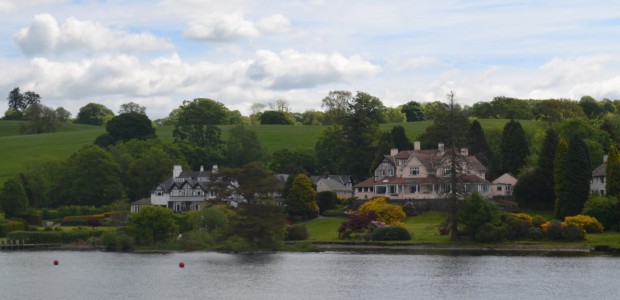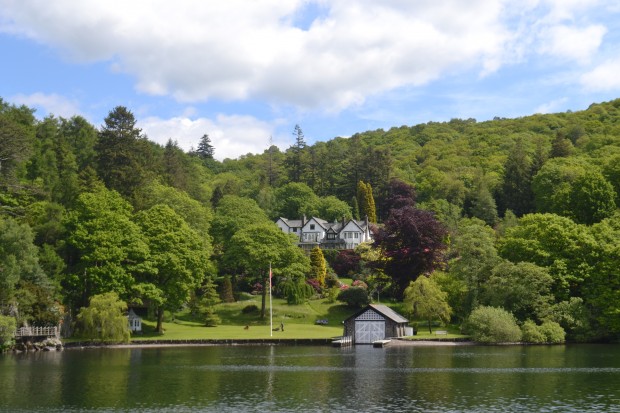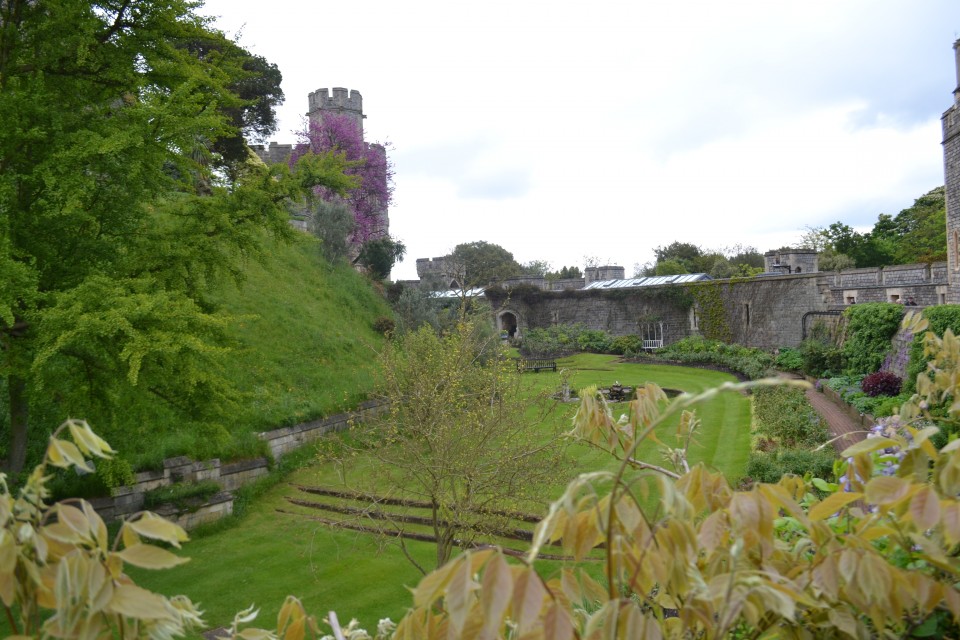
Many people have asked me, “What was your favorite thing in England?” I answer honestly that it is so hard to choose. I liked ALL of it. We saw so many wonderful interesting and historical things, but perhaps seeing the countryside would rank high on my list. Understand that many of my pictures of the countryside were taken from a moving bus or train through windows. The pictures do not begin to capture the beauty of England. Now I know why people talk about the “English Countryside”.
There were miles and miles of green rolling fields. Imagine how long it would take to build these stone wall field bounderies.
Most interesting were the hedgerows that marked field boundaries. I found this information.
English Hedges
BY DAVID ROSS, EDITOR (Britain Express)
Few things have helped create the look of the English countryside more than hedgerows. Hedges have been used for a long time in England, yet for all their antiquity, much of the familiar checkerboard pattern they help create is of very recent vintage.
Hedges in Dorset, England
Hedges have been used as field boundaries in England since the times of the Romans. Excavations at Farmoor (Oxon) reveals Roman hedges made of thorn. The Anglo-Saxons also used hedgerows extensively, and many that were used as estate boundaries still exist. Although these early hedges were used as field enclosures or to mark the boundaries of one person’s property, there was no systematic planting of hedges in England until the first enclosure movement of the 13th century.
The pressures of population expansion led to a widespread clearing of land for agriculture, and the new fields needed to be marked clearly.
Later, farming expansion in the 15th century led to more widespread hedge planting, but the greatest use of hedges came in the Enclosure Movement of the 18th and 19th centuries.
The Enclosure Movement is a fancy term that historians use to describe the habit of wealthy landowners enclosing common fields for their own use, usually for the purpose of raising sheep.
The plants are pleated together to create the hedges.
We all got excited every time we saw sheep or cattle in the fields (We saw them often.) I know they are blurry blobs, but… aren’t they cute?
Bright yellow fields of rapeseed oil (canola) are abundant. Andrew our guide said many Englishmen complained when the crop was introduced because it was the wrong color for England.
This picture was taken from Windsor Castle. It took my breath away. Everything was so green.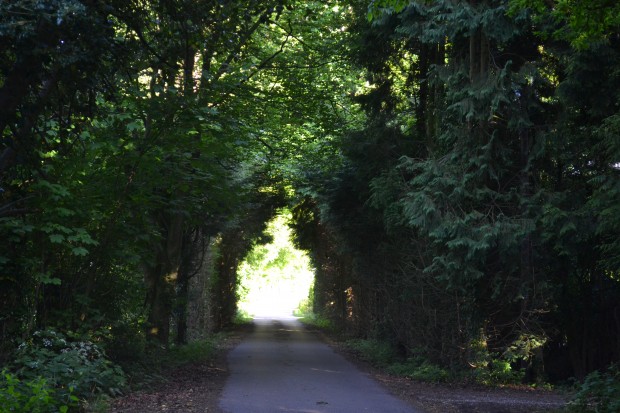
Sweet Mother of Pearl. This was like a fairytale. I fully expected Prince Charming to come riding his white horse along that path. We walked under this canopy of trees to a country house for dinner on the last night of our tour. Beautiful!
By the seashore, the views were spectacular.
Lake Windermere is the largest natural lake in England. You can see why it is a popular vacation destination. It is located in the Lake District National Park.
There are gorgeous homes and hotels on this lake.
Be still my heart. As Hot Rod says, “I could get use to this.”
Blessings to you and yours,
Seeing the beauty of the English Countryside made me think of this hymn by by Folliott S. Pierpoint that was written in 1864.
For The Beauty Of The Earth
For the beauty of the earth,
For the beauty of the skies,
For the love which from our birth
Over and around us lies,
Lord of all, to thee we raise
This our grateful hymn of praise.

